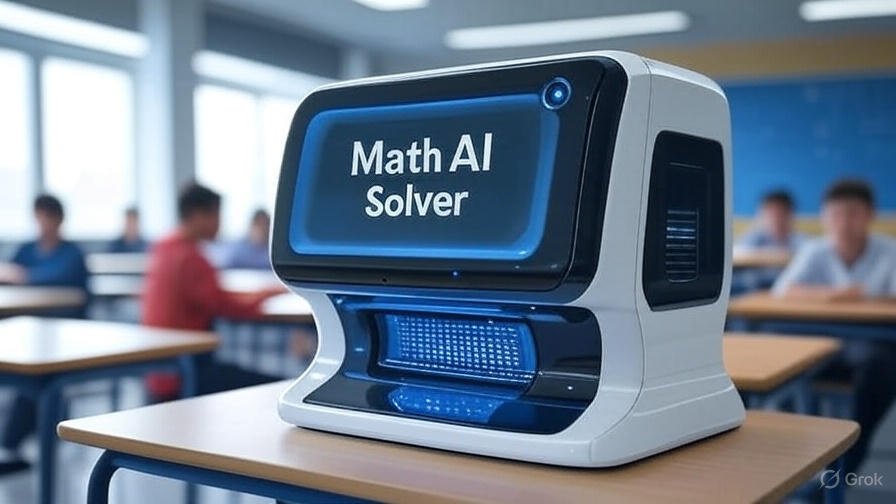The Rise of Math AI Solvers
The concept of using technology to solve mathematical problems is not new. Calculators and computer algebra systems have been around for decades. However, the latest generation of AI-powered math solvers represents a significant leap forward. These tools leverage machine learning, natural language processing, and vast computational power to interpret, solve, and explain mathematical problems in ways that were previously unimaginable.
Unlike traditional calculators, which require precise input formats, modern math AI solvers can process queries written in natural language. For example, a student can type, ‘What is the derivative of x squared plus 3x?’ and receive a step-by-step solution, complete with explanations and visual aids. This accessibility has made these tools invaluable for learners at all levels, from middle school students grappling with algebra to university researchers tackling advanced calculus.
How Math AI Solvers Work
At their core, math AI solvers combine several cutting-edge technologies. Natural language processing enables the system to understand user inputs, whether typed or spoken. Machine learning algorithms analyze the problem, identify the appropriate mathematical techniques, and generate solutions. Additionally, many platforms incorporate computer vision, allowing users to upload images of handwritten or printed equations for instant analysis.
Once a problem is processed, the solver provides a detailed breakdown of the solution process. This feature is particularly beneficial for educational purposes, as it encourages students to learn the underlying concepts rather than simply copying answers. Some platforms even offer interactive elements, such as sliders to manipulate variables or graphs to visualize functions, enhancing the learning experience.
Leading platforms in 2025, such as those developed by major tech companies and educational startups, have integrated these solvers into broader learning ecosystems. For instance, they connect with virtual tutors, adaptive learning modules, and collaborative tools, creating a holistic environment for mastering mathematics.
Impact on Education
The integration of math AI solvers into classrooms has sparked both excitement and debate. Proponents argue that these tools democratize education by providing instant, personalized support to students who may not have access to one-on-one tutoring. In rural or underserved areas, where qualified math teachers are scarce, AI solvers serve as a vital resource, bridging gaps in educational equity.
Teachers, too, are finding value in these tools. By automating routine tasks like grading or generating practice problems, educators can focus on fostering critical thinking and problem-solving skills. Some schools have even incorporated AI solvers into their curricula, using them to design project-based learning activities that challenge students to apply mathematical concepts in real-world scenarios.
However, critics caution against over-reliance on technology. They argue that excessive use of AI solvers could hinder students’ ability to develop independent problem-solving skills. To address this, educators are emphasizing the importance of using these tools as learning aids rather than shortcuts. Progressive institutions are also implementing guidelines to ensure that AI solvers are used ethically, such as requiring students to show their work alongside AI-generated solutions.
Beyond the Classroom
The influence of math AI solvers extends far beyond education. In industries such as engineering, finance, and data science, professionals are using these tools to streamline complex calculations and optimize workflows. For example, an engineer designing a bridge can use an AI solver to quickly verify structural equations, while a financial analyst can model economic scenarios with greater efficiency.
Moreover, the accessibility of these tools has empowered hobbyists and lifelong learners. Online communities dedicated to mathematics have flourished, with enthusiasts sharing AI-generated solutions to challenging problems and collaborating on projects. This democratization of knowledge is fostering a global culture of curiosity and innovation.
Challenges and Future Directions
Despite their promise, math AI solvers face several challenges. One major concern is ensuring accuracy across diverse problem types. While most platforms excel at standard mathematical queries, they occasionally struggle with ambiguous or highly specialized problems. Developers are actively working to improve the robustness of these systems, incorporating feedback from users to refine algorithms.
Another challenge is accessibility. While many math AI solvers are available for free or at low cost, premium features often require subscriptions, which may be prohibitive for some users. Advocacy groups are pushing for greater open-access options to ensure that all learners can benefit from these advancements.
Looking ahead, the future of math AI solvers is bright. Researchers are exploring ways to integrate these tools with augmented reality, allowing students to interact with 3D mathematical models. There is also growing interest in multilingual capabilities, enabling solvers to support non-English speakers more effectively. As AI continues to evolve, these platforms are likely to become even more intuitive and versatile.
Conclusion
As we navigate the complexities of the 21st century, math AI solvers stand out as a beacon of innovation in education and beyond. By making mathematics more accessible, engaging, and relevant, these tools are empowering individuals to unlock their potential and tackle challenges with confidence. While there are hurdles to overcome, the ongoing collaboration between educators, developers, and policymakers is paving the way for a future where learning knows no bounds.
In 2025, the story of math AI solvers is one of transformation—a testament to the power of technology to inspire, educate, and connect us all. As these tools continue to evolve, they promise to redefine our relationship with mathematics, making it a journey of discovery for generations to come.




